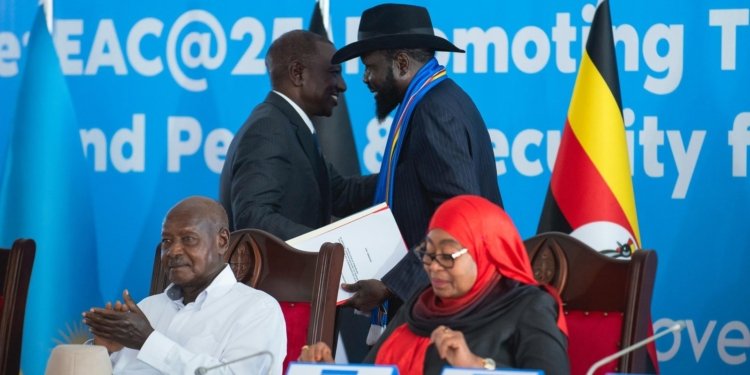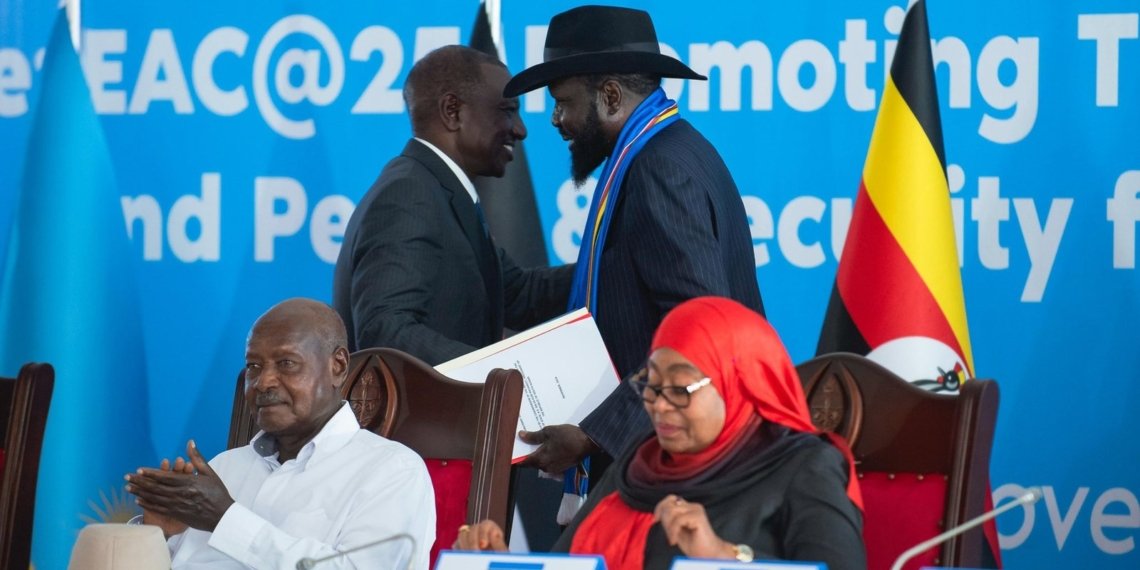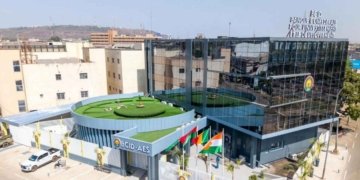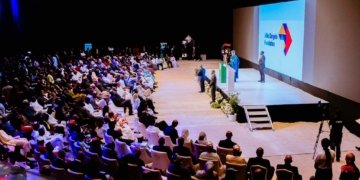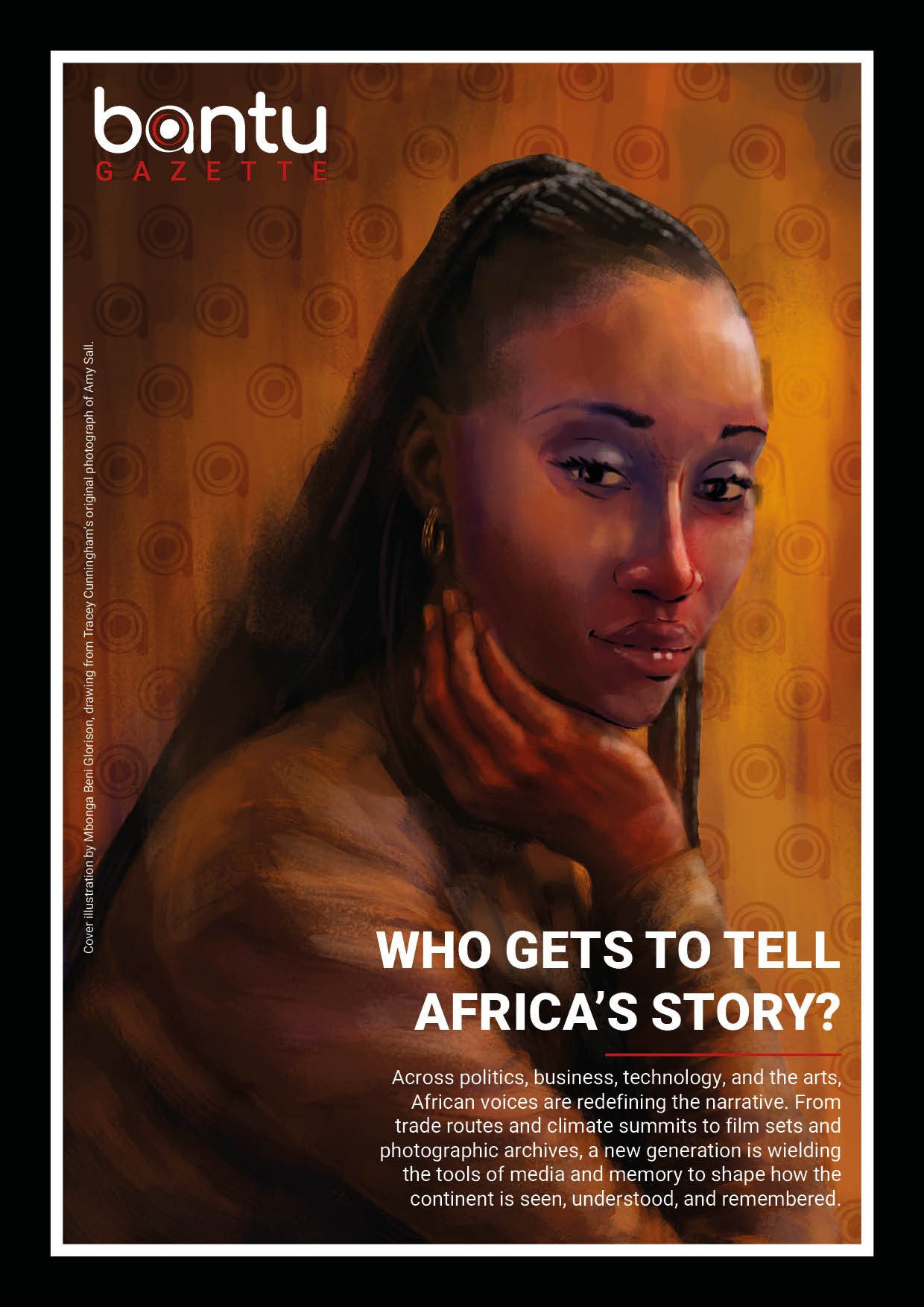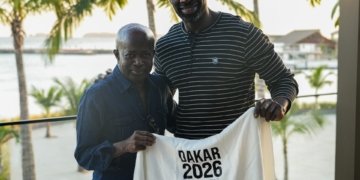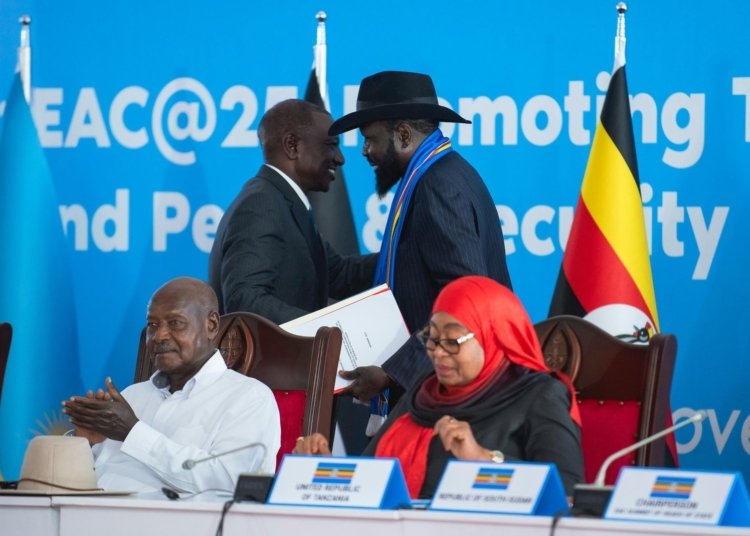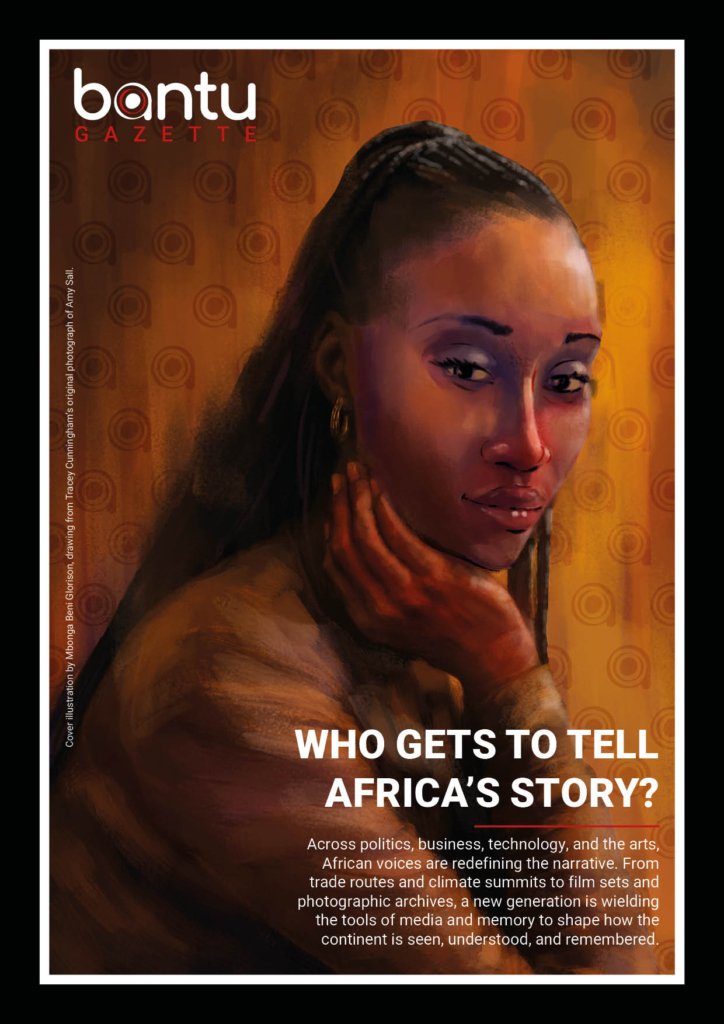Ruto Urges Elimination of Trade Barriers as EAC Celebrates 25 Years of Regional Cooperation
ARUSHA, Tanzania (BG) – Kenyan President William Ruto officially assumed the East African Community (EAC) chair from South Sudan’s President Salva Kiir on Sunday.
During the 24th Ordinary Summit of EAC Heads of State, held in Arusha, Tanzania, Ruto outlined his commitment to advancing peace, economic development, and deeper regional trade.
In his first address as EAC chairman, Ruto emphasized the importance of intra-EAC trade as a key driver for regional integration and economic growth.
“Trade remains a key engine for economic growth and regional integration. We must address internal barriers to intra-EAC trade,” Ruto said, calling for the elimination of non-tariff barriers, improved infrastructure connectivity, and regulatory harmonization.
The summit was attended by regional leaders, including Rwandan President Paul Kagame, outgoing chair Salva Kiir of South Sudan, Tanzanian host President Samia Suluhu Hassan, Ugandan President Yoweri Museveni, Burundi’s Vice President Prosper Bazombanza, and EAC Secretary-General Veronica Nduva.
“The colonial powers succeeded due to the region’s internal weaknesses. We became a DTA-disconnected trade area. Kenyatta, Obote and Museveni took the bold step to form the East African Federation in 1963 in a brave effort to dismantle this DTA,” said Museveni.
The heads of state also agreed that Somalia would serve as the rapporteur of the EAC for the coming year.
On the summit’s sidelines, Somali President Mohamud held discussions with Presidents Museveni and Ruto, focusing on enhancing regional integration, trade, and security cooperation. Mohamud commended his counterparts for their leadership and reiterated Somalia’s commitment to contributing to the region’s shared goals of peace and prosperity.
Celebrating 25 Years of Regional Integration
The East African Community also marked 25 years of regional integration. “We honor the legacy of our founders as we work on shaping our common vision and shared destiny,” the EAC said in a tweet, celebrating the bloc’s expansion to eight member states, now representing over 300 million people.
The summit reflected on the ambitions of the EAC’s founding fathers, Kenya’s President Jomo Kenyatta, Uganda’s Dr. Apollo Milton Obote, and Tanganyika’s (now Tanzania) President Julius Nyerere—who first envisioned an East African Federation in 1963. Leaders noted that the bureaucrats tasked with following up on this vision did not see it through.
The region’s integration is progressing steadily, evidenced by milestones such as the East African Customs Union, the establishment of the Common Market in 2010, and the implementation of the East African Monetary Union Protocol.
Vision for the Future
According to the EAC, intra-EAC trade has grown from $65 billion in 2017 to $109 billion in 2023.
The EAC encompasses an estimated 302.2 million citizens, with more than 30% living in urban areas. The region covers 5.4 million square kilometers and has a combined gross domestic product (GDP) of $312.9 billion. The integration process holds significant strategic and geopolitical importance, with prospects for a renewed and reinvigorated EAC.
Efforts toward forming an East African Federation are being fast-tracked, reflecting the serious determination of EAC leaders and citizens to establish a strong and sustainable economic and political bloc.
In May 2017, the EAC Heads of State adopted the Political Confederation as a transitional model toward achieving the East African Political Federation.
